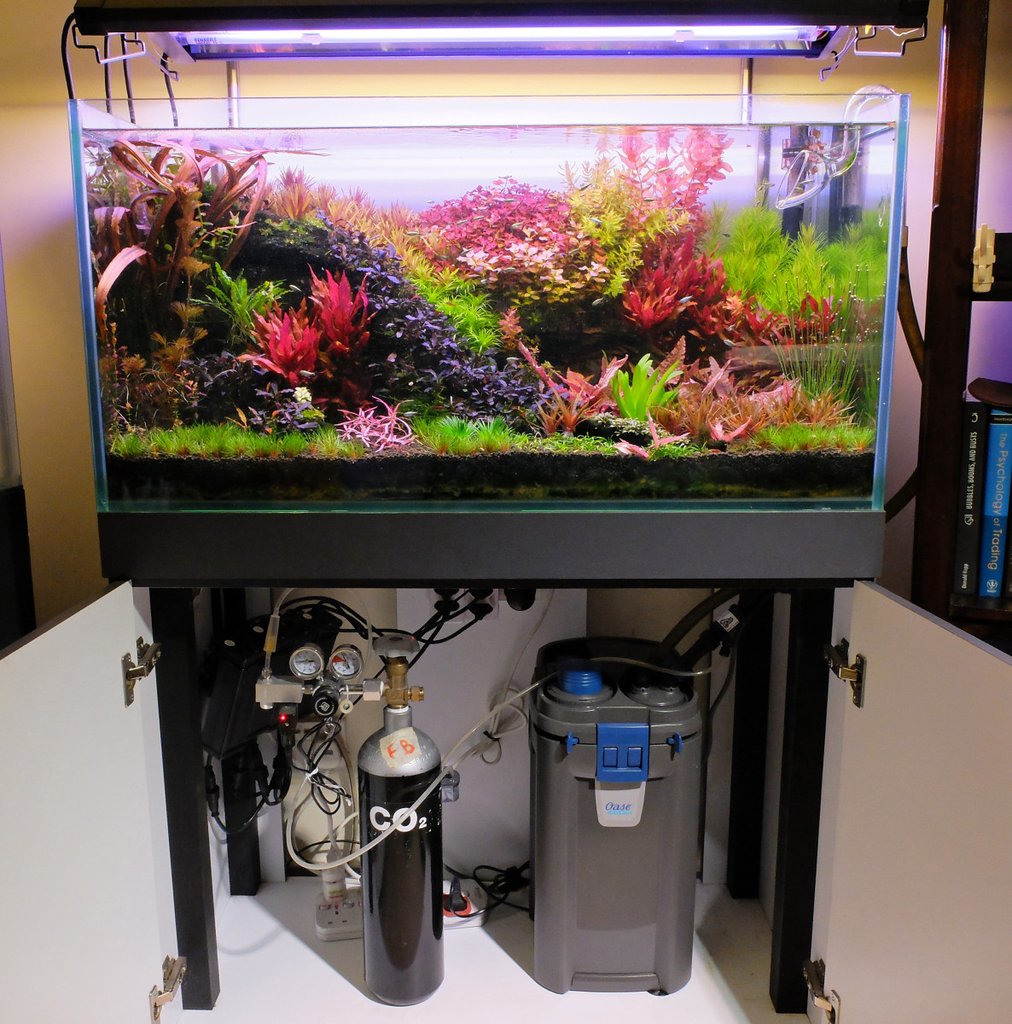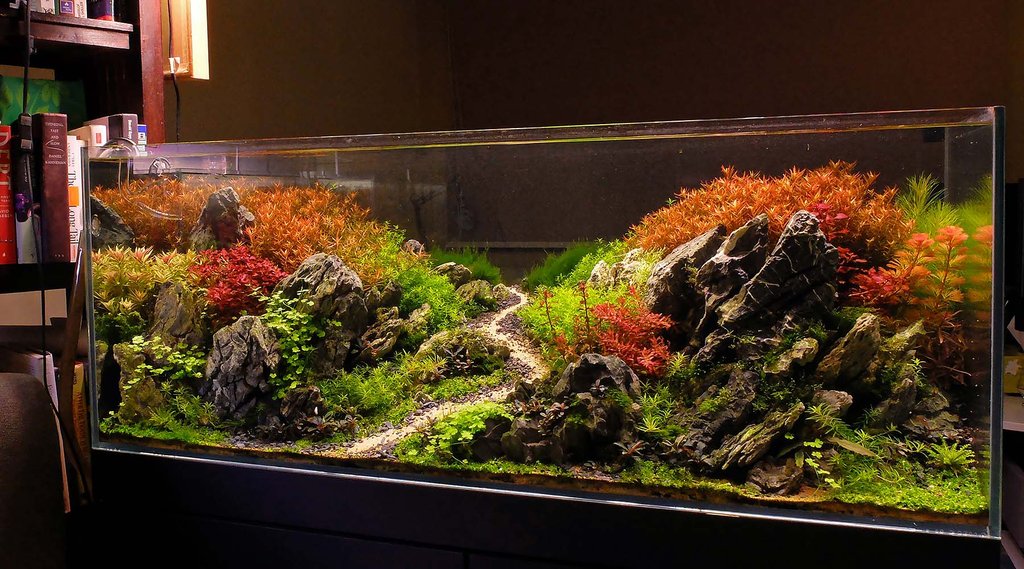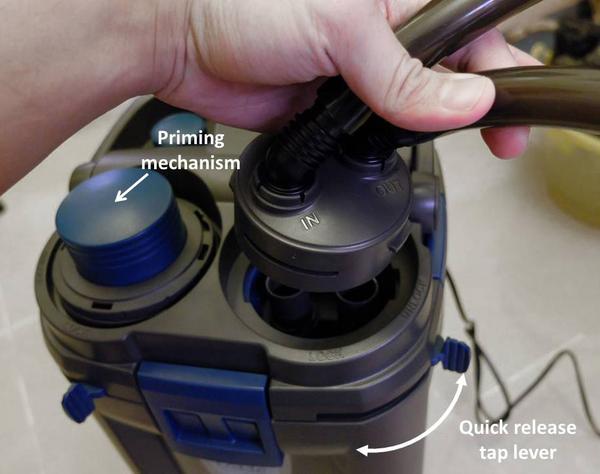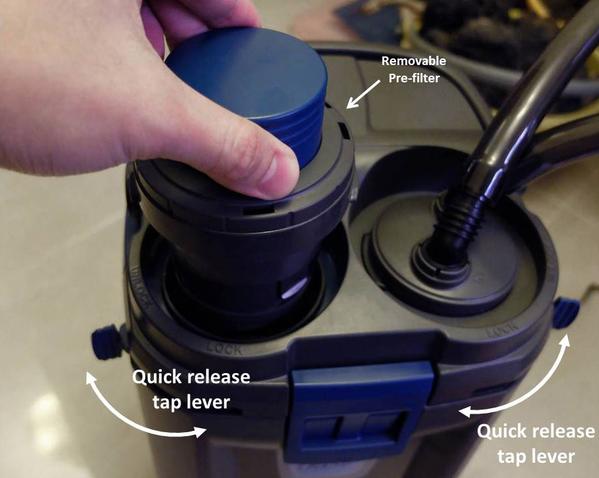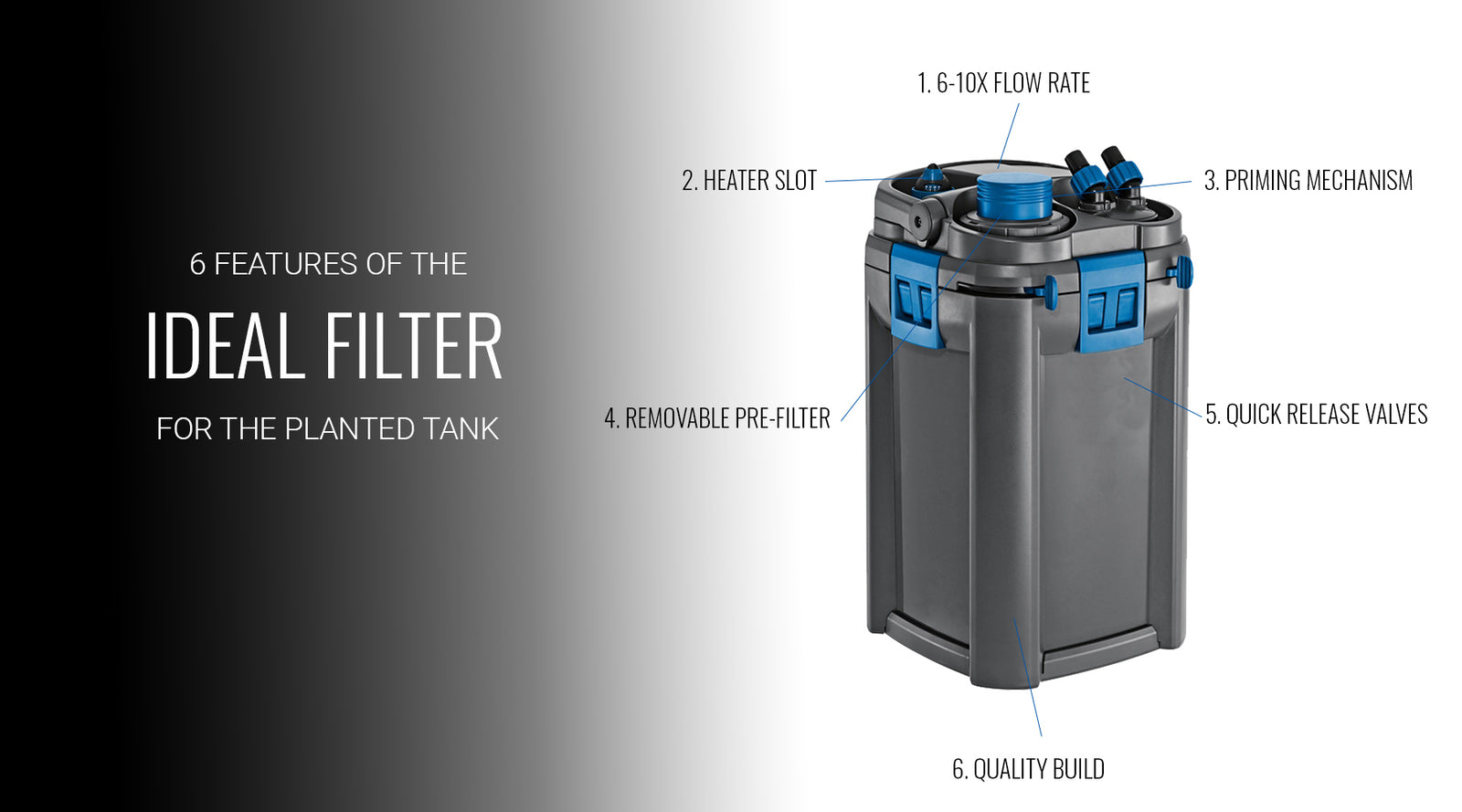
Plants filter the water no? Why is a filter still useful in a planted aquarium?
Matured planted tanks with a low bio-load vs plant mass ratio may not have great need for biological filtration where ammonia from livestock is concerned as growing plants readily take in ammonia as a nitrogen source.
However, ammonia is not the only form of organic waste in a tank. High density, high growth rate planted tanks that face frequent pruning and replanting often produce quite a bit of organic detritus through bits of cut plants and old growth even without much livestock. These become triggers for algae even if water parameters test for no ammonia present. Planted tanks that are slower growing (i.e. low tech/non CO2 style) actually produce less plant detritus by comparison.
To this end, filters are still extremely useful in planted tanks for capturing plant debris and processing organic waste – which are key algae triggers. One of the most useful features in a filter is thus being able to remove coarse organic debris on a regular basis. This section also includes other features are that important in a filter. Features such as ease of servicing should not be underestimated as it greatly influences whether a person actually conducts regular maintenance on the filter or always procrastinates due to the trouble of taking parts of the filter apart.
One the filters that I have used extensively in recent years is the Oase Biomaster series. (featured in top picture) Here I go over key features that I think should be in every filter setup.
1. 6-10X Turnover flowrate
For many planted tanks, the filter functions as the main source of water flow. Having a good filter size and thus flow for the tank negates the need for supplementary pumps or additional filters. This means less visible clutter and less filter inlets/outlets to distract from the aesthetic beauty of a clean setup.
In a planted tank a flow of around 6 to 10X turnover of tank volume is my recommended ‘target’ flow rate to achieve optimal circulation of O2/CO2 – and for delivering nutrients to plants. Of course, the filter should operate with minimal noise, and the better ones are able to do with ease. In other words, strong AND silent flow is achievable, widely available and should not be compromised.
I prefer using a single filter for tanks sizes 4ft and below, with no supplementary pumps. Using glass pipes that hide easily further disguises the presence of tank equipment.
2. Heater Slot
Less equipment in the tank maximizes space for aquascaping. Being in the center of flow ensures that heated water is distributed evenly throughout the tank. Less clutter in the tank means cleaner presentation and more room for aquascaping.
3. Priming Mechanism
There is often the misconception that a filter is set up once and left to run ‘forever’. This contributes to algae problems, especially in heavily planted tanks. To make the chore of regular maintenance less onerous, easy accessibility is key. A priming function enables the starting of the filter without the need to manually start the downward flow of water in the filter intake pipes. (i.e. sucking on the water hoses). It enables far easier maintenance work and setup if the filter require priming to start up again. Most modern filters have this by default.
For filters such as the Oase biomaster series, filter maintenance is further improved by having an easily removable pre-filter compartment as detailed below.
4. Removable pre-filter
Easy accessibility is the best way to encourage regular maintenance and tank cleanliness. And nothing helps this more than a pre-filter compartment that can be cleaned without needing to take the main filter apart. Planted tanks produce a lot of debris – that should be removed regularly. Having an easy access system improve tank maintenance a lot. I find this an essential feature that folks overlook. Many filter models do not come with this – the two models that I use that do are the Oase Biomaster series and the larger filters from Aquael.
The fine filter sponges on the Oase Biomaster are designed to capture fine debris; this means that the main chambers remain very clean. The downside is that it should be emptied out more often; I clean my pre-filters every 3 weeks to a month depending on the tank setup. I service the main chambers only once very 6 to 8 months.
The Oase Biomaster series have a sizeable removable pre-filter compartment.
5. Quick release valves
This enables the filter to be serviced without fumbling with the water hoses. Quick release shut-off valves allows one to remove the filter from the water pipes that run into the tank instantly without mess/dripping water. It is easy to install your own valves if the filter comes without these.
6. Build-Quality
Filters last a very long time if they are built of quality materials. Poor quality models have higher risk of leaking and breakdown.
